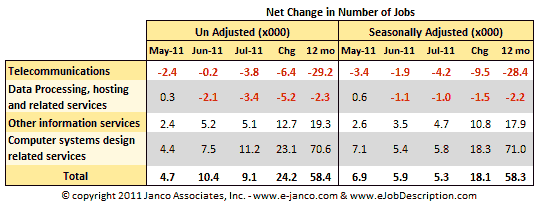 Tech Still a Bright Spot in Jobs Report
Tech Still a Bright Spot in Jobs Report
The U.S. economy added 117,000 jobs in July, more than in May and June combined, yet there's plenty of gloom and doom among the pundits.
Such as this, from Bloomberg quoting an economist at Parthenon Group in Boston: There is not a lot to celebrate even though it was better than most feared.
And this from U.S. News & World Report quoting the director of economic research at accounting firm J.H. Cohn and former deputy assistant secretary in the U.S. Department of Labor: Given that expectations had fallen so low, even a snail could've jumped over the expectations.
Yet the tech job market continues to fare far better than the overall job market. In June, when the nationwide unemployment rate was 9.2 percent (it slid to 9.1 percent in July), the unemployment rate for tech professionals dropped to 3.3 percent, from 5.3 percent in January, according to a Bloomberg story in the San Francisco Chronicle. Janco Associates reports the Labor Department shows 5,300 IT jobs added in July, though a decline from the 5,900 in June.
The Register breaks out the tech jobs in the July (editors note: June data) report this way:
- Computer and electronic products manufacturers added 1,100 jobs overall.
- Computer and peripheral equipment makers added 200.
- Communication equipment makers shed 1,700.
- Semiconductor and electronic component makers added 3,000.
- Electronic instruments makers cut 500.
- Data processing and hosting sector cut 2,200 jobs.
- Telecommunications cut 3,200, continuing a long slide.
- Computer systems design and related services added 7,500 workers.
- Management and technical consulting services firms added 11,200.
Though the unemployment issue in the overall economy continues to weigh on the national psyche, recent reports show confidence and increased hiring expectations for the tech sector for the remainder of the year.
Janco CEO Victor Janulaitis is quoted on ejobdescription.com predicting a soft IT job market and more turnover for at least one more quarter as CIOs move to more flexible staffing models and cloud computing.







